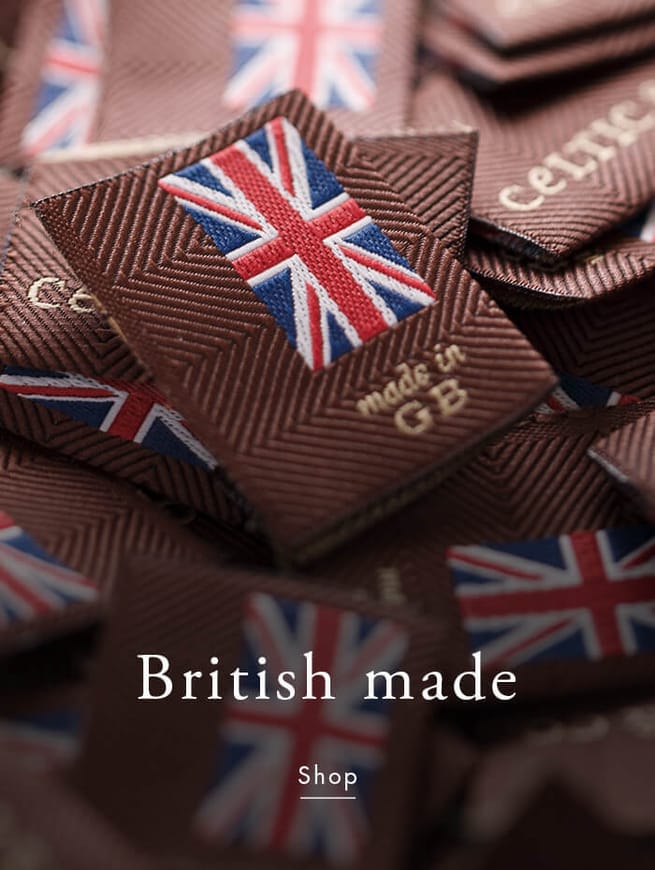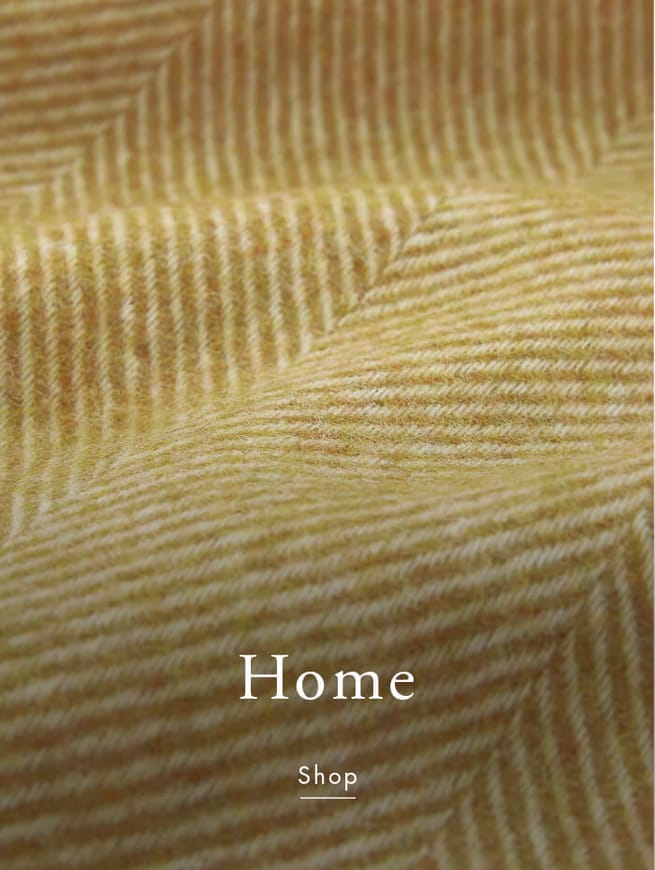
Outerwear
All of our sheepskin outerwear garments are specialist dry clean only. They are pre-treated to resist marks and stains before they leave us, however, over time you may wish to reapply this treatment at home, and this can be done by using the Cherry Blossom Spray Protect on the suede/leather side of your garment. Please ensure that you follow the instructions on the can and hold the product at the required distance so that the liquid cannot run down the garment. If your sheepskin outerwear does become marked, it can be easily sponged and brushed, but for a complete clean, please send it to a specialist dry cleaner.
Footwear
Almost all of our boots and slippers are machine washable with our Celtic Wool Wash unless otherwise advised, please check the specific product page on our website for particular instructions.
Please note: It is common for darker colours to fade during washing. For contrasting colours on the same pair, we strongly recommend hand washing in cool water, using our wool wash.
To repel dirt and stains, we would advise you to apply our Universal Spray Protector to all your sheepskin footwear, please read the can for directions.
Machine Washable:
Put the boots in a pillowcase to avoid drum marks from the washing machine. Machine wash on a 30 degree wool cycle with Celtic Wool Wash. This is the only wool wash that has been tried and tested over many years on our sheepskin footwear, so while others are available we can’t be sure that you will get the same results if you use them.
Sponge Clean Only:
For styles which are sponge clean only, we recommend using our Celtic Wool Wash in cold water to gently remove any dirt or stains on your boots.
Always allow to dry naturally, away from all artificial heat sources.
Once dry, gently brush with our Multi-Purpose Suede Brush.
Do not:
- Soak - Use fabric conditioner
- Use artificial heat to dry - Dry in direct sunlight
All of our knitwear is crafted from 100% natural wool fibres and have the same cleaning and care instructions, even if your garment is crafted from a wool blend.
Our natural fibres include;
- Alpaca
- Geelong
- Merino
- Donegal
- Lambswool
- Cashmere
Dry clean or hand wash only in cold water using Celtic Wool Wash. When washing by hand, avoid twisting or wringing as this may damage the wool.
To remove excess water from the garment we recommend wrapping it in a towel and gently squeezing it before leaving the item to dry. Do not put on a spin cycle.
Lay the product out flat to dry, do not hang your wool garments.
Allow to dry naturally away from all artificial heat sources.
Pilling
Pilling is not a sign of poor quality and is to be expected in places where two pieces of fabric rub together, such as under the arms. Pilling occurs more commonly in natural fibres as they have not been chemically treated to prevent it. Regular de-pilling using either a comb or electric de-fuzzer will help to prevent this.
Storage
Knitwear should never be hung, as hanging can cause stretching in the shoulders or can make the garment grow in length. We recommend folding garments to store them.

The care instructions for our waxed cotton coats vary between styles, so please check the care label of your garment for specific instructions. Styles which are machine washable can be put in the machine on a 30 degree cycle with a gentle detergent. Styles which are sponge clean only should be brushed to remove any dirt or grit, then sponged down with cold water.
Protect your leather goods with our Protector Spray. It forms an invisible shield to repel liquids and stains, and dries clear so is suitable for both footwear and clothing. If your leather boots have seen better days, start by using a soft brush to remove any mud or dirt, then let our Universal Cleaner work its magic. When using leather cleaners on our products, we would advise you to do a small patch test on a discreet area initially before cleaning the entire product. Leather clothing can be taken to a specialist dry cleaner as and when necessary.
Please note that these instructions apply for all organic cotton and linen products. If your item contains a blend of cotton or linen with wool, follow wool washing instructions instead. For 100% cotton or linen; machine wash these garments on a 30 degree wash, allow your garments to dry naturally and do not tumble dry these items.
Does our dye transfer?
Due to the beauty and individual nature of our natural garments and its dyeing process some dye transfer may occur onto light clothing or furniture – as with any deep, richly dyed material. As there is a slight risk of colour transfer when washing, please wash our items with similar colours.
How do you remove oil based stains from sheepskin?
One of the most common queries we receive is how to remove grease and oil from footwear following accidents in the kitchen. Before working on the stain with anything wet, which may set it in, apply some talcum powder or chalk to the area which should help to draw the grease out. After a few hours remove the powder by brushing it off with a soft brush. Follow this up with a spot clean using our Cleaner Spray, and finally, if the stain hasn't lifted, use our Celtic Wool Wash to either machine wash or sponge clean the boots or slippers. Once the footwear has fully dried, which can take a few days, give them a good brush over with a soft brush to bring up the nap.
If I have used protector spray on my sheepskin footwear will they need re-spraying after washing?
Yes our boots and slippers would have to be resprayed with a protector after being washed.
Why is my knitwear shedding?
Shedding occurs when fabric is rubbed together or comes into contact with other surfaces. Shedding happens to all fabrics, although it is more likely with natural fabrics. Shedding is the fibre being pulled directly from the fabric and captured by a more ‘abrasive’ fabric as they brush against each other. It is impossible to prevent shedding all together, but you can take steps to limit it. A common way to minimise shedding of garments made from natural protein-based fibres is to freeze them as this makes the fibres more likely to remain fixed in place. This is easily done by placing your garment in your freezer within a zip lock bag for a couple of hours.











